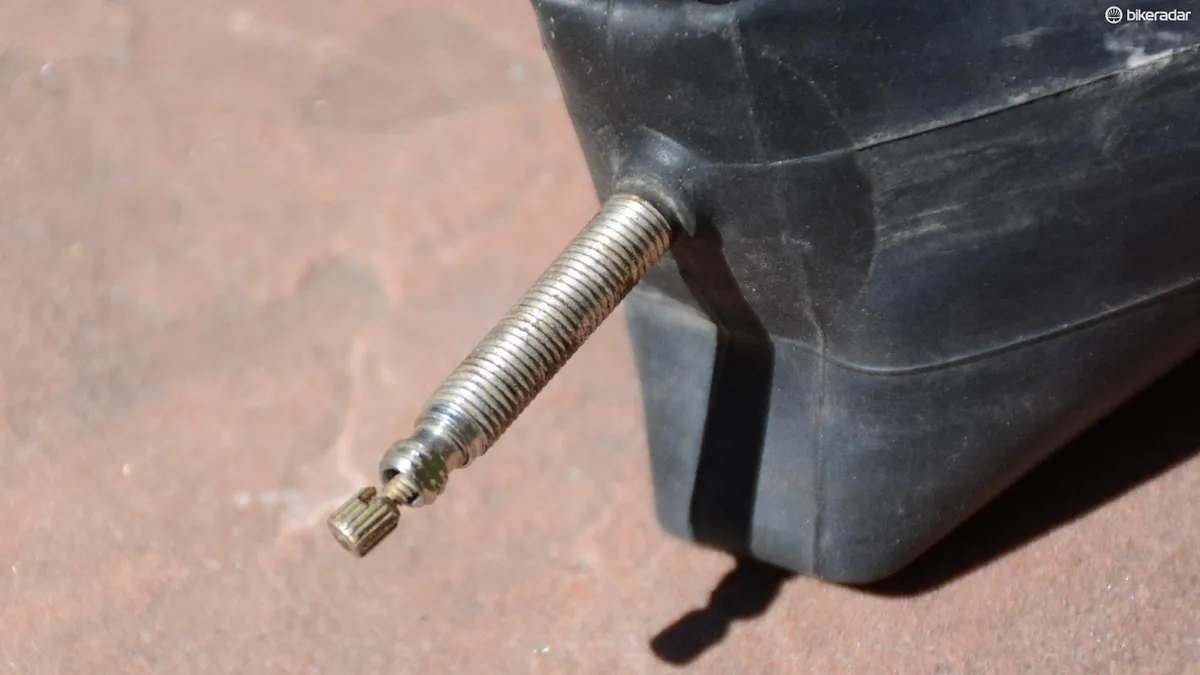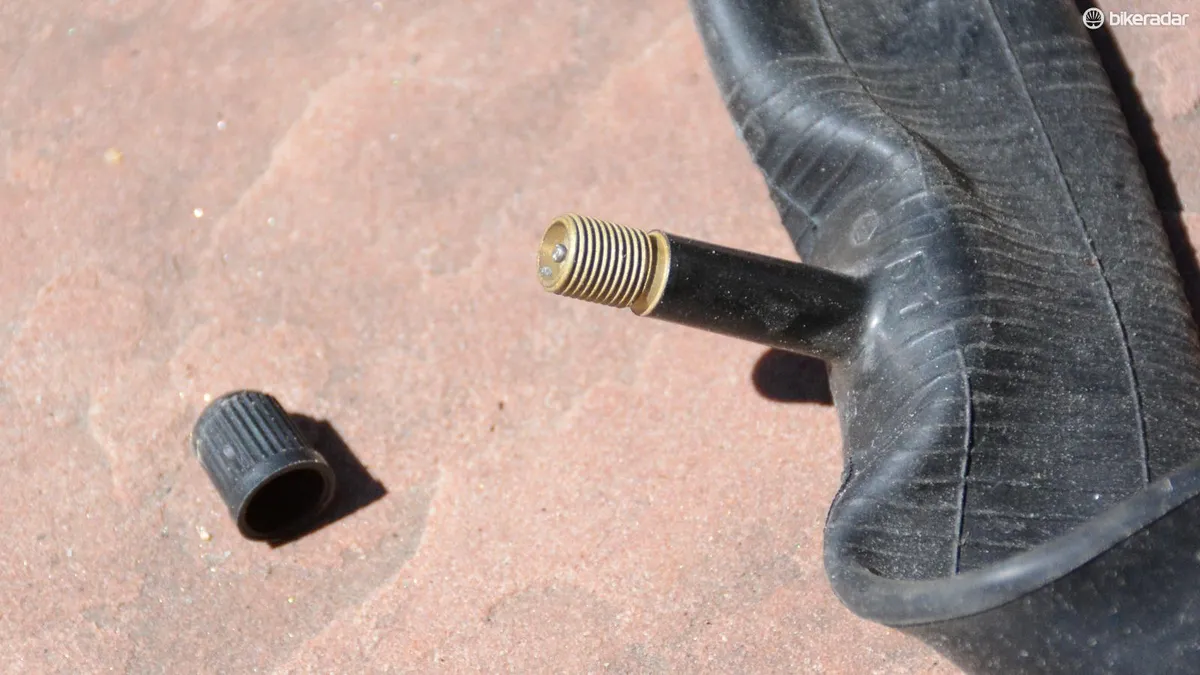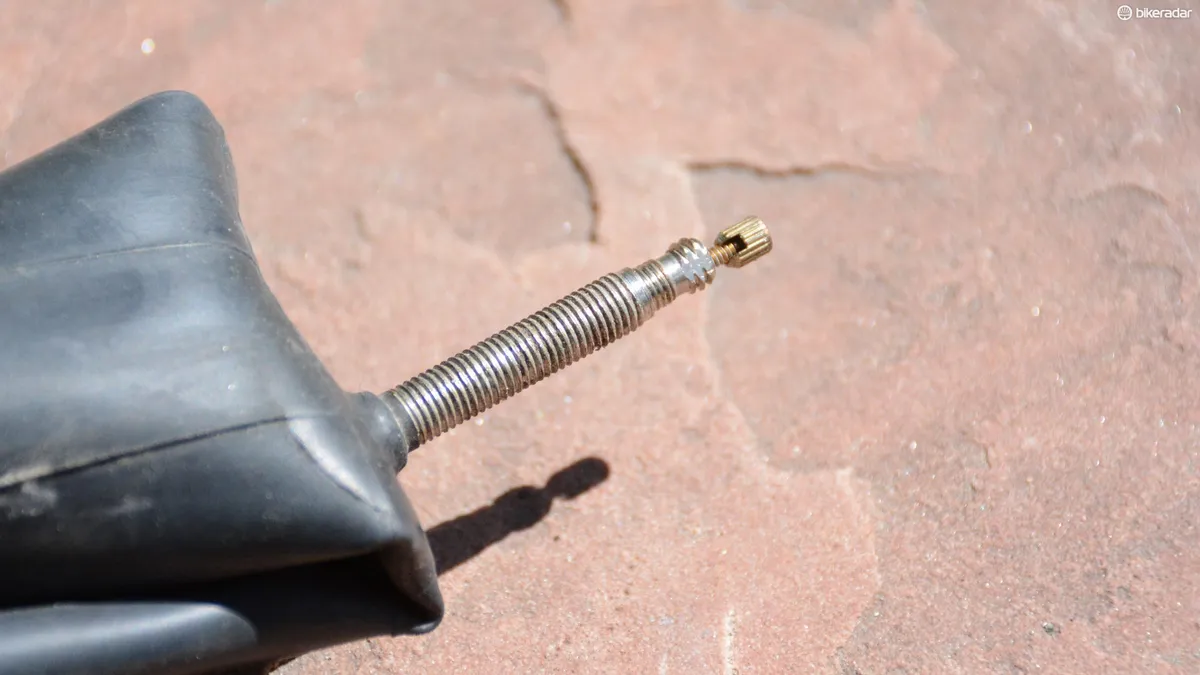I know it’s borderline sacrilege around these parts, but I have a few technical problems with Presta valves. Although it seems illogical, keeping bike tires inflated consistently is the last giant hurdle for bicycle technology.
Despite all of the material wizardy, the electronic precision of drivetrains, and the exacting training regimens of a rider, a simple tire puncture can make or break an entire career. The ride of a lifetime can unravel simply due to loss of air.
- Ten of the best performance road tires lab tested
- Best road bike tires: what you should look for
- Clement Strada LGG tire review

Why do these weird valves exist?
Basically it comes down to history and a lack of options.
As manufacturers looked to make additional weight savings, bike rims were made narrower and a Schrader valve (8mm vs. 6mm) took up too much rim real estate, making the most fragile part of the rim (around the valve hole) even more so. So a new valve solution was needed to deal with this — the Presta valve.
But now (at last!) wheel and bike companies have recognized the benefits of wider rims and tires, and have the manufacturing know-how to produce them at the desired weight. Today's road rim widths are wider than those of MTB rims 10 years ago, which used Schrader valves.

Presta valves are also supposed to be easier to pump to higher inflations, but that sort of doesn't add up when you think about a rear shock that routinely sees upwards of 200psi or more. Also, it's thankfully less of an issue since roadies are starting to come around to the benefits of lower tire pressures.
Then there's weight. Because of Presta's common use on nicer bikes, tube manufacturers offer lighter weight versions. But this could change quite quickly if the market needed it to.
And sure, a Presta valve probably weighs two or three grams less than a Schrader, but really, are you that big of a weight weenie? Just blow your nose or spit if two or three grams is causing concern.
And the last consideration is valve length — tube manufacturers could easily make longer Schrader valves. 48mm Schrader valves exist, perhaps a valve extender could be used for additional length when needed.
Why Presta valves need to be retired
1. Presta valves are fragile
This is my biggest annoyance. Once a Presta valve stem is unscrewed it's a whispy, delicate aluminum rod. Bending it, or snapping it clean off happens, and that can ruin a ride. That sucks.
Maxxis' marketing guy Bobby Brown acknowledged this, saying: "Presta valves are great since the valve cores can easily be replaced without a proprietary tool, but the valves are more frequently replaced due to damage."
2. Presta valves need an adaptor or a special pump
I know the bike industry loves standards, and speciality tools, and ways of doing things, but does it have to extend to what should be the most simple task of all — adding air to tires?
You probably know what's on nearly every corner in every town. I'm going to clue you in, it's not a bike shop. It's a gas station, where more often than not they have an air hose. But if your bike tire is low and you have Presta valves that air hose is practically worthless without the little adaptor.
Look at virtually every other pneumatic thing that requires air inflation: cars, airplanes, plumbing, even Dakar rally suspension, they all use Schrader valves. If Presta was the superior valve to be used, other industries would use them.
3. Presta valves involve more steps
It comes down to ease of use and Presta valves have the extra steps of unscrewing the valve to add air, then remembering to tighten the valve down. Both valves have little plastic tops, which aren't necessary, but do offer a bit of protection and keep dirt out.
4. Air retention is the same
As far as air retention, it comes down to the tube or the tubeless set up more so than the valve. "Both (valves) test similarly on air retention assessments," according to Maxxis' Brown.
5. Presta is just another confusing bike thing
Like left hand threads, 15 bottom brackets standards, ridiculous wheel size naming (700c?, 650B?, 27.5in?), clipless pedals to clip into; the industry should help us cyclists on the valve thing.
Weirdly enough the bike industry, and unfortunately some bikers, can have an elitist air about them. But does that elitism have to extend to our air valves. Really?
6. Presta removable cores come unthreaded at the worst of times.

Thanks to tubeless tires, more and more Presta valves have removable cores for adding sealant. Because the core can be unthreaded, I've had a Presta valve core come unscrewed more than a few times when I was miles away from help.
It happens with pump heads that screw on (like Lezyne), and it's a severe let down to think you're almost finished up fixing a flat only to have all the air you just pumped in come rushing out as you pull off the pump.
7. Schrader drilled rims can use either valve
Backwards compatibility! Moving to Schrader valves can be done to most rims. I say most because I'm in no way recommending drilling carbon rims.
Plus, if your rims are drilled for larger Schrader valves, you're in luck with either valve. If your rims are only Presta, not so much. And you don't have to have a Presta valve for tubeless, tubeless Schrader valves do exist!
8. Schraders allow more air for tubeless set up
Typically, the hole in a Schrader valve is larger than that of a Presta valve, which means more air for seating tubeless tires. Regarding tubeless valves, Trek's Bontrager marketing man Alex Applegate mentions that he likes how Presta "...locks the valve into place on the rim with a nut."
While still common, the tubeless Schrader valves that do exist have a lock nut.
I likely won't get my way
I'm probably just dreaming about a future devoid of delicate, proprietary valves that no other industry uses. When asked about Presta vs. Schrader, Trek's Applegate responded: "I guess I haven't put much thought into this," meaning it must not be a question that comes up frequently.
Maxxis' Brown also threw shade on my Schrader-filled utopia, saying: "Presta valves are uniquely a bicycle technology and retain a more premium image accordingly, so we do not see them going anywhere anytime soon."
